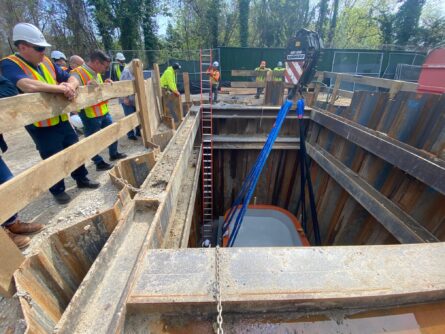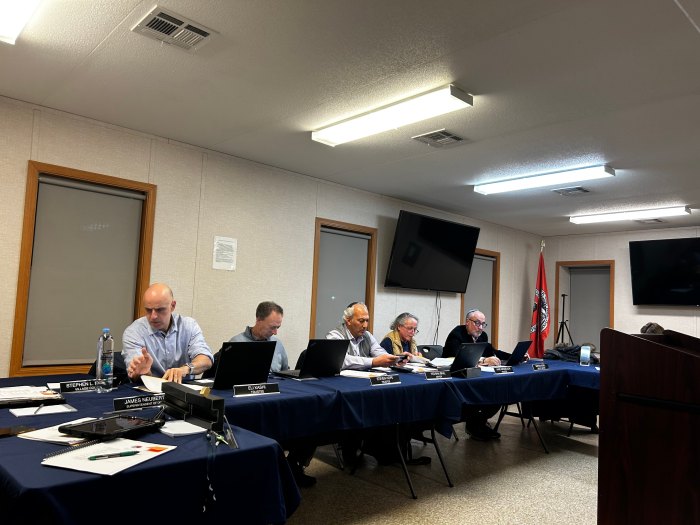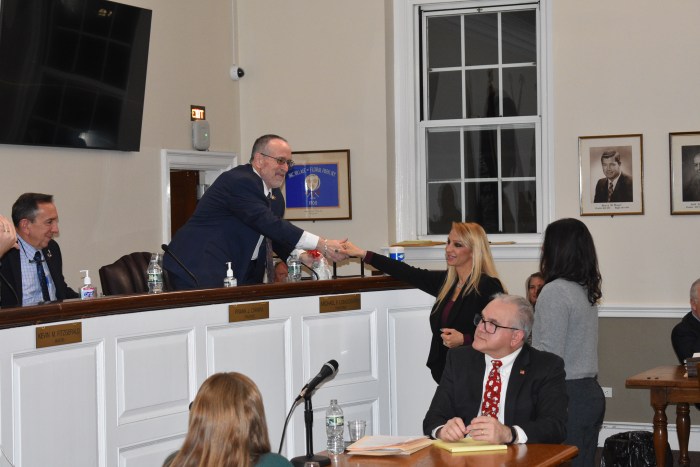Exactly where you live on Long Island may directly affect the impact you have on the environment.
The region has long been a disorganized mishmash of cesspools, septic tanks and sewage systems with varying degrees of impact on local ecosystems and groundwater.
Which areas rely on sewers as opposed to cesspools and septic tanks is primarily dictated by county lines. Nearly 90% of Nassau County is connected to sewage systems, compared to roughly a quarter of Suffolk.
Despite this massive discrepancy, Nassau still has a way to go in nullifying the adverse environmental effects that persist from the continued use of antiquated wastewater infrastructure in small pockets of the county.
Cesspools and septic tanks are inherently worse for the environment than conventional sewage systems. Sewers are directly connected to wastewater treatment facilities, pumping waste to sites that extract most of the harmful contaminants before being disposed of.
Nassau County has roughly 3,000 miles of sewer mains servicing well over half a million residents, three wastewater
treatment plants under the Department of Public Works, and an additional 57 sewage pumping stations within the county.
While sewers take wastewater far away for treatment, cesspools and septic tanks are methods of on-site water disposal.
Cesspools are essentially underground pits that collect wastewater for later removal. They don’t separate liquid waste from solids and allow contaminated water to seep into the surrounding soil.
Due to this hazardous consequence, government regulations have prohibited the implementation of cesspools in newly constructed homes since 1973.
Septic tanks are basically a progression of the older cesspool model. These underground holding tanks differ in that they separate liquid waste from solid, allowing far less contaminated water to leach back into the ground.
However, these systems still enable destructive nutrients to filter into the ecosystem and require pumping every few years.
Older Systems on North Shore
While most of the South Shore and central regions of Nassau County utilize sewers, much of the North Shore still uses these older systems.
According to the Long Island Sound Study, some 40,000 homes and small businesses in Nassau County use cesspools or septic tanks, most of which are spread across areas from Kings Point to Oyster Bay.
At the heart of this issue are the dire consequences that pollutants from these wastewater systems can have on the groundwater and local ecosystems.
Specifically, nitrogen excesses stemming from cesspool and septic tank leakage have profoundlyimpacted the Long Island Sound and the region’s drinking water.
Nitrogen buildups have polluted drinking water sources and have contributed to hypoxic areas in the Sound. These are
areas of low dissolved oxygen concentrations stemming from excessive amounts of nutrients, like nitrogen, causing abnormal and dense plant growth.
This process disrupts marine wildlife, wrecking food chains as fish clear the area and more immobile organisms, like crabs and starfish, are left to suffocate, effectively creating dead zones.
This issue extends beyond the Sound’s natural habitat. Groundwater sources are also threatened, particularly in areas devoid of adequate sewage systems.
As the Science Coordinator for the Long Island Sound Study, Dr. James Ammerman has seen this issue firsthand.
“For groundwater, the major source [of nitrogen pollution] would be cesspools and septic systems,” he said, “In Suffolk County, this nitrogen contaminates not only the Sound but also our drinking water… at some point it may reach the EPA drinking water contaminant limit of 10 milligrams per liter.”
While Nassau County utilizes a far more expansive sewage system, nitrogen pollution has still affected the area.
Hypoxic areas are far more prevalent in the western portion of the Sound, especially in the warmer months.
The North Shore, where most of the county’s septic systems are located, continues to exacerbate the problem.
“Nitrates are extremely soluble in water, so they leach into the soil and groundwater from septic systems and cesspools; there is little difference between the two in terms of groundwater contamination,” said Ammerman. “Sewage systems prevent groundwater contamination because they flow into sewers, which usually flow into treatment plants and then
are released into water bodies… even untreated sewage does not impact groundwater but does contaminate rivers and streams.”
While transitioning septic systems to sewers would do much to remedy this environmental hurdle, many logistical issues prevent this.
Ammerman said, “The limitations on infrastructure are primarily housing density, money and politics – much of Suffolk has septic systems because the houses are spread out, [while] most of Nassau is more dense.”
Beyond population densities, constructing sewage systems would be a costly endeavor and a massive undertaking.
Residents from Nassau County’s North Shore and Suffolk County alike have resisted these changes in years past. Progress has been made, but it remains to be seen if enough is being done to curb the ill effects of older septic infrastructure still in use.
Sewage expansion on the island has been slow, but not totally absent. The Forge River Wastewater Treatment Plant opened in Mastic earlier this year. The $228 million facility is expected to connect nearly 2,000 homes to sewers on the South Shore of Suffolk County.
Efforts to Replace Aging Systems
A more immediate solution to the contamination of the Sound and Long Island’s groundwater has been government efforts to replace older septic systems and upgrade existing wastewater treatment facilities.
Nassau County launched the Septic Environmental Program to Improve Cleanliness (S.E.P.T.I.C.) four years ago, as a way to improve septic systems that could not feasibly be replaced by sewage treatment systems. The program, funded federally and statewide, is run by the Nassau County Soil and Conservation District and offers eligible residents up to $20,000 to replace their older septic systems.
District Manager Derek Betts sees the program as a way for residents with older, failing septic systems to obtain a newer, much more environmentally safe system without shouldering a heavy financial burden. “Our program offers both an environmental and financial incentive to eligible applicants to install these environmentally friendly systems at a lower cost than it would be to install a new conventional system,” Betts said.
According to Betts, they use technologies that “introduce an aerobic component to the septic system infrastructure that allows bacteria to metabolize nitrogen and convert it into an environmentally friendly form that gets released into the atmosphere.”
While these systems usually will cost twice as much as a conventional septic tank, funds provided by the government can make it a cheaper alternative for residents. The program has already replaced approximately 180 older systems.
For decades, there has also been a concerted effort to update wastewater treatment facilities to remove nitrogen more effectively from their disposal. Improvements to these facilities have actually seen a steady decrease in nitrate pollutants and hypoxic areas in the Sound over the past 20 years.
“There are four major NYC wastewater treatment plants near the western Sound and LaGuardia Airport, which completed nitrogen-removing upgrades around 2009,” said Ammerman.
“While this has definitely improved water quality and decreased the area of hypoxia in the
Sound, more needs to be done, especially because of the increasing water temperatures due to
climate change,” he added.
Warmer waters and a few outmoded septic systems that aren’t going anywhere mean that environmental degradation will continue to be a pressing issue for Nassau County residents. Betts remarked, “I think the statistic we use is that 90% of Nassau County is sewered, and 90% of the 10% that isn’t, is on the North Shore of Long Island.”
Tyler Rieger is a reporter with the SBU Media Group, part of Stony Brook University’s School
of Communication and Journalism’s Working News program for students and local media.
































